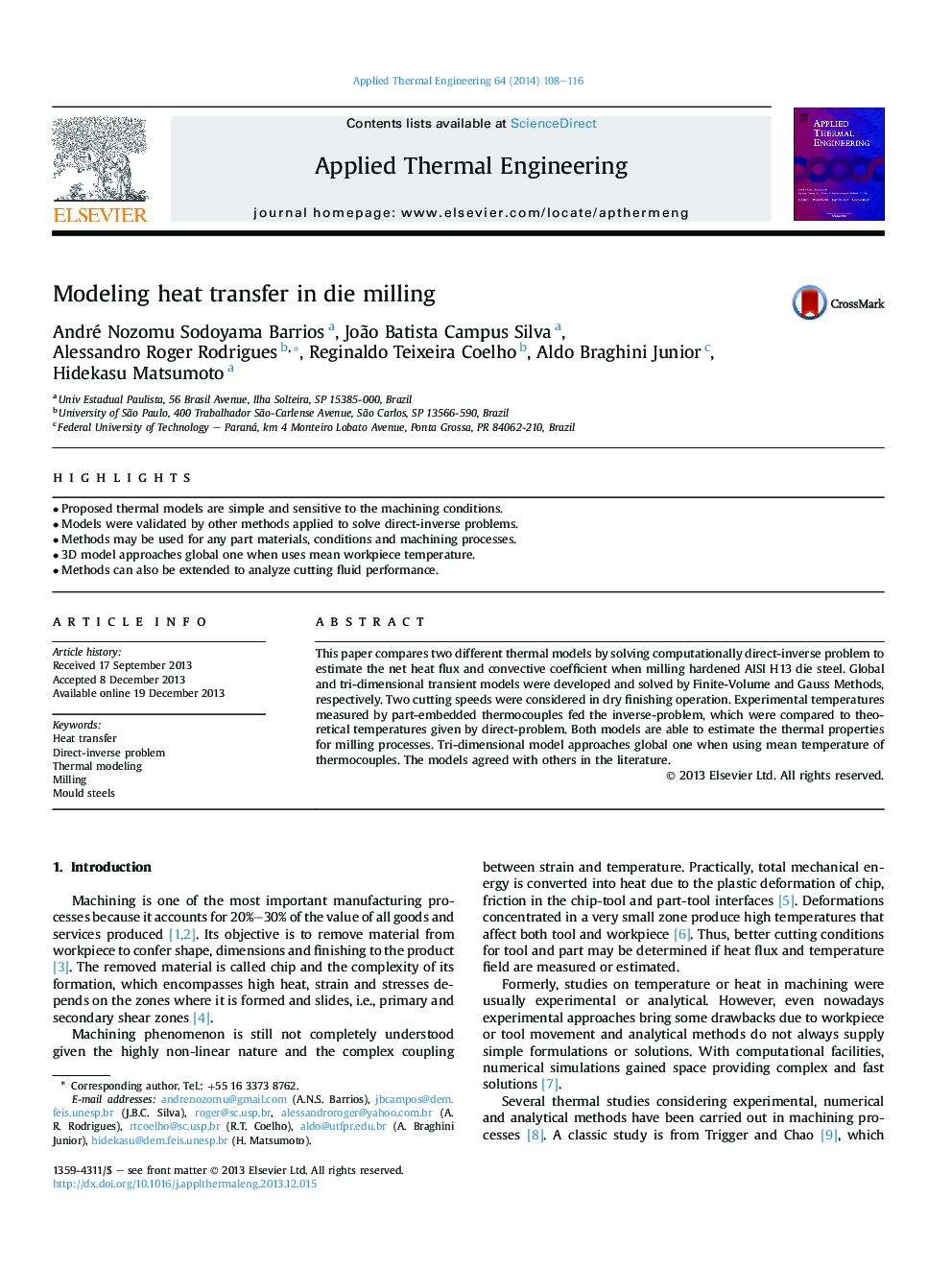| Article ID | Journal | Published Year | Pages | File Type |
|---|---|---|---|---|
| 646182 | Applied Thermal Engineering | 2014 | 9 Pages |
•Proposed thermal models are simple and sensitive to the machining conditions.•Models were validated by other methods applied to solve direct-inverse problems.•Methods may be used for any part materials, conditions and machining processes.•3D model approaches global one when uses mean workpiece temperature.•Methods can also be extended to analyze cutting fluid performance.
This paper compares two different thermal models by solving computationally direct-inverse problem to estimate the net heat flux and convective coefficient when milling hardened AISI H13 die steel. Global and tri-dimensional transient models were developed and solved by Finite-Volume and Gauss Methods, respectively. Two cutting speeds were considered in dry finishing operation. Experimental temperatures measured by part-embedded thermocouples fed the inverse-problem, which were compared to theoretical temperatures given by direct-problem. Both models are able to estimate the thermal properties for milling processes. Tri-dimensional model approaches global one when using mean temperature of thermocouples. The models agreed with others in the literature.
